The Great Backyard Bird Count came to a close yesterday and there were three things that stood out for me.
One: the birding wasn’t exactly great, but it was satisfying.
Two: I stuck to the backyard of my immediate neighbourhood, not foraying too far from where I live. I did this for a reason. Often, it’s tempting to go to bird-rich habitats and notch up a big count. I was keen to survey and re-survey the same stretch of the backyard – old, familiar haunts – to see what kind of bird diversity I could dig up and compare it with years past.
Three: The count fell below expectations and a lot of the species I had surveyed during years past (when I didn’t keep such a meticulous checklist) were absent. These include winter waders and migratory ducks like Garganey and Common Teal, which I have observed at these locations on past occasions.
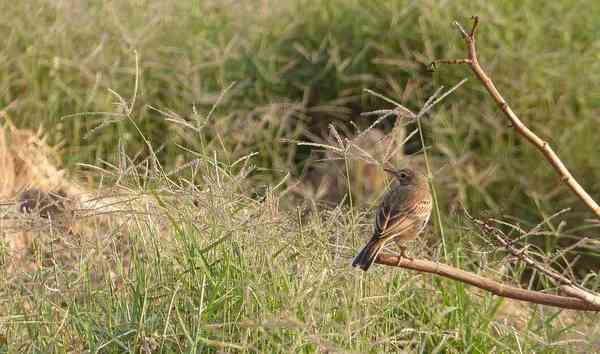
A Paddyfield Pipit at Agara Lake. Pic: Bijoy Venugopal
Great Backyard Bird Count across three neighbourhood lakes
Starting Saturday morning and through Sunday morning and evening, I walked beside three wetland habitats in my neighbourhood. Kaikondrahalli Lake, Kasavanahalli Lake and Agara Lake fall within a three to four kilometre radius. Of these, Kaikondrahalli Lake has the most bird diversity and range of habitats from open water to reed-beds and shallow swamps. Kasavanahalli has been ‘beautified’ to an extent, to the effect that a lot of the shallow reed beds and swamps — which are essentially part of a wetland habitat — have been compromised. Agara Lake, though larger, is heavily polluted and disturbed. I expected the bird diversity here to be very low. However, all of these habitats, when surveyed during the Great Backyard Bird Count weekend, yielded an average of over 45 species each.
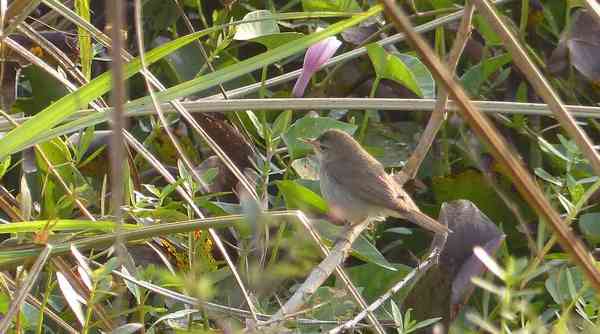
Blyth’s Reed-Warblers were the most numerous of the wintering warblers at Agara Lake. Pic: Bijoy Venugopal
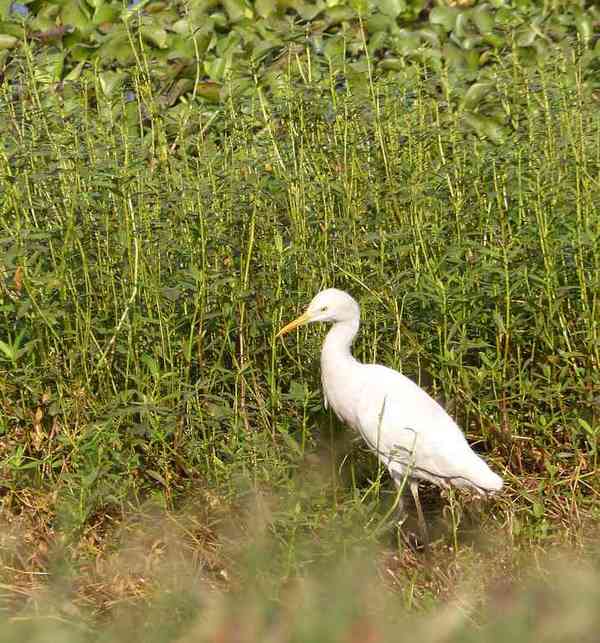
A Cattle Egret forages in unusual solitude. Pic: Bijoy Venugopal
I shall devote some part of this post to the results of the Sunday morning birding at Agara Lake. I remember birding with Arun at Agara Lake nearly eight years ago and seeing an Indian Spotted Eagle on the artificial island which is now the roost of two species of cormorants – the Indian Cormorant and the Little Cormorant. Notably, the Little Grebes that were absent at the other two lakes were seen here. Only two individuals, though, including a juvenile. Only the resident Indian Spot-billed Duck was seen in unflattering numbers. No migratory ducks were seen at this lake (in the past I have seen Northern Shovelers in large numbers here). A Western Marsh Harrier was the only migratory raptor noted here. Even sandpipers were seen in very low numbers. A single Black-headed Ibis and flock of Red-naped Ibis, numbering about 14, passed overhead. Notable, however, was the sighting of three individual Zitting Cisticolas. In the past, this bird (known to those who have grown up on Salim Ali field guides as Streaked Fantail Warbler) used to be fairly numerous in lake reed-beds. Of late, it has been hard to come by. A single Brown Shrike, also a winter migrant, was seen. A Paddyfield Pipit and an Oriental Skylark were also sighted.
Great Backyard Bird Count highlight – Rosy Starlings spectacle
At Kaikondrahalli on Sunday evening, nearly everyone was a birder thanks to an enormous flock of Rosy Starlings that electrified the atmosphere here at roosting time. There must have been at least five thousand birds and this is a conservative estimate, because the great flock split and rejoined and spread out across the lake to claim every available roosting spot. It was a real estate takeover on a massive scale and soon the egrets, Black-headed Ibis and cormorants were edged out, and they were flying all around the lake looking for parking. The chirping and warbling of the huge flock reached fever pitch and the mood was like a cricket stadium on a good day for India. Suddenly, the entire flock would fall silent only to begin chattering again in a few seconds.
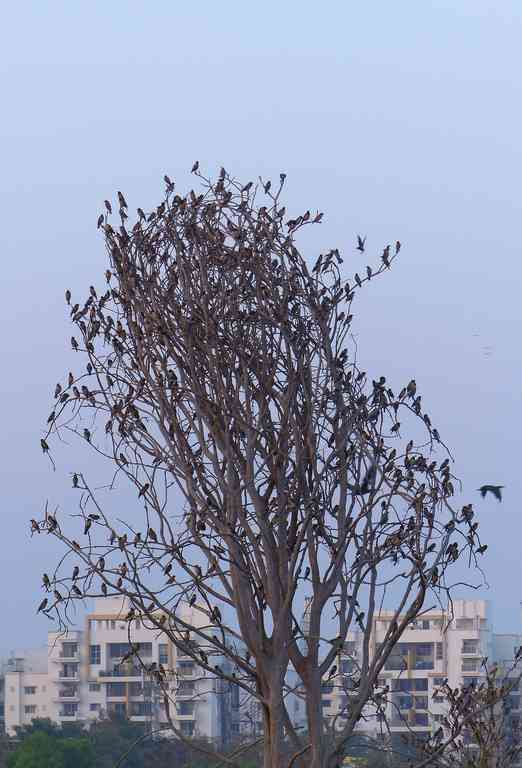
Rosy Starlings occupy all the seats on this burdened tree. Pic: Bijoy Venugopal
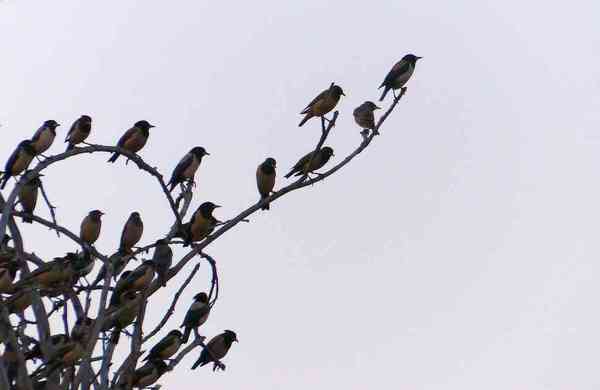
Branches creak under the sheer weight of these tiny birds. Pic: Bijoy Venugopal
A lone Painted Stork was the only other surprise at Kaikondrahalli yesterday, besides a Pheasant-tailed Jacana in non-breeding plumage. Notable is the absence of Pied Kingfishers at this time of the year. My old friends, the Northern Pintail and the female Northern Shovelers were there, too.
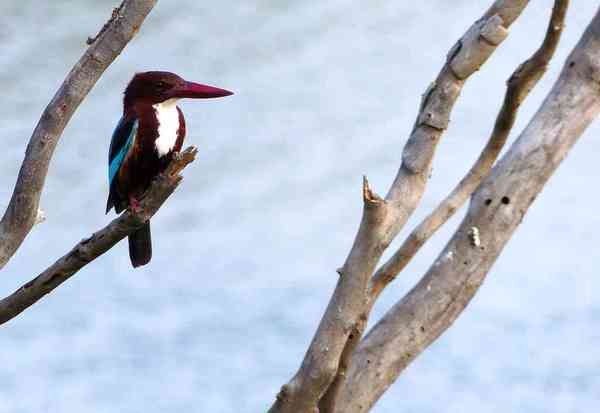
White-throated Kingfisher at Kaikondrahalli Lake. Pic: Bijoy Venugopal
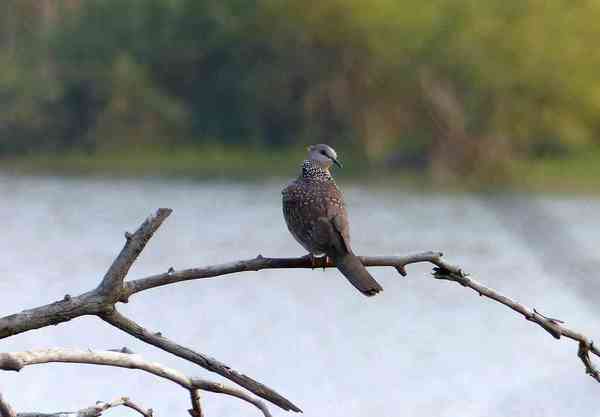
A Spotted Dove in the evening light. Pic: Bijoy Venugopal
Across the world, the Great Backyard Bird Count has so far turned up nearly 83,500 checklists and 4,515 species at the time of writing this post. Over nine million individual birds were counted. From India alone, the Great Backyard Bird Count website registered over 3,300 checklists and 640 species. The enthusiasm is great to share, and eBird checklists always help in understanding recent sightings in the neighbourhood.
Much as I enjoy birding in a small group, there’s nothing I cherish like birding solo. The rewards are harder won, but personally it’s about the space the activity allows for meditation, quiet reflection and the joy of discovery as old, disused neurons fire away. There are more birding events coming up and I’m looking forward to bringing the backyard into focus again.
Related Articles
Whitefield’s lakes are a haven for bird watchers
In pictures: Backyard birding at Kaikondrahalli and Kasavanahalli lakes